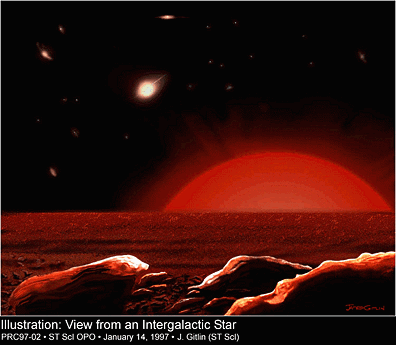Are all stars in a galaxy?
![]()
No, not all stars are in a galaxy. They may have once belonged to a galaxy, but they are not a part of it any more. Some of these so-called "stellar outcasts" or "intergalactic stars" have actually been observed by NASA's Hubble Space Telescope.
In fact, the Hubble Space Telescope discovered 600 or so such "outcast" stars in a small region in the Virgo cluster, 60 million light-years away from Earth. The stars detected are all bright red-giants. Many more dimmer stars, beyond Hubble's detection, may be among the galaxies in the cluster as well.
How do we know these stars are not part of a galaxy? We can observe their motion, and the motion of any nearby galaxies. The observations show that the motion of the individual star is governed by the gravitational field of the cluster as a whole, rather than the pull of any one galaxy. In other words, they are truly "intergalactic", or between galaxies.
Astronomers had expected the existence of intergalactic stars. They had been predicted to exist as a result of galaxy interactions and mergers early in a galaxy cluster's history. Such close encounters would have ripped stars out of their home galaxies and tossed them into intergalactic space, where they would drift free of the gravitational influence of any single galaxy.
 |
|
This is an artist's concept of the view of the night sky seen from the
surface of a planet orbiting an "intergalactic" star in the Virgo
cluster of galaxies.
|
![]()
The StarChild site is a service of the High Energy Astrophysics Science Archive Research Center (HEASARC), within the Astrophysics Science Division (ASD) at NASA/ GSFC.
StarChild Authors: The StarChild Team
StarChild Graphics & Music: Acknowledgments
StarChild Project Leader: Dr. Laura A.
Whitlock
Curator:
Responsible NASA Official: